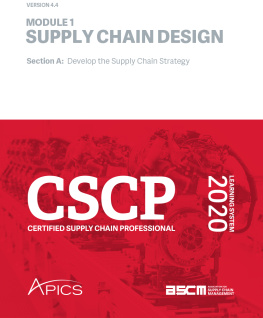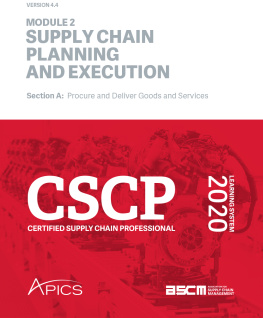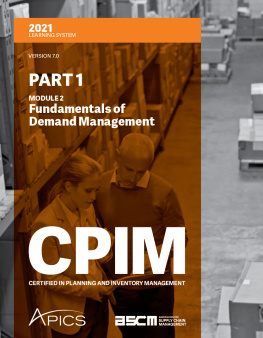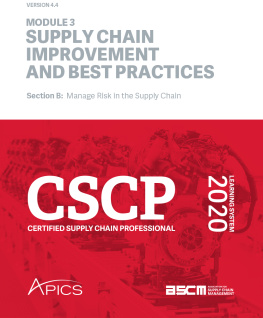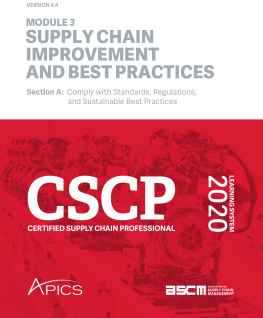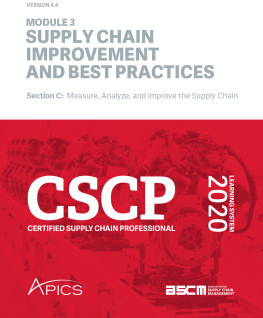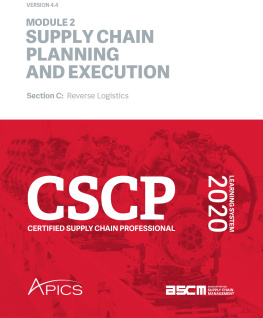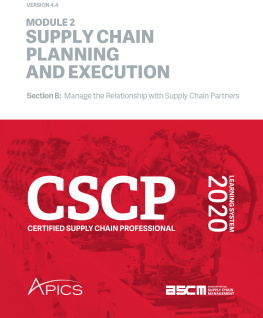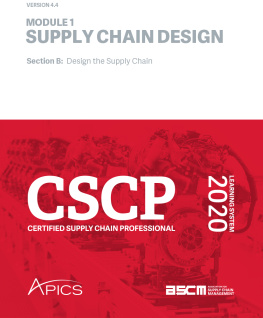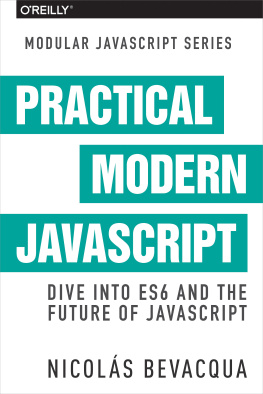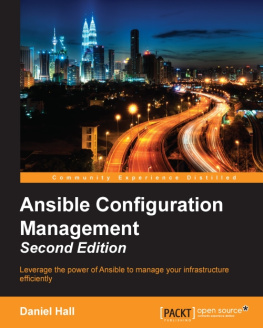APICS - CSCP 2020 Module 1 Section A
Here you can read online APICS - CSCP 2020 Module 1 Section A full text of the book (entire story) in english for free. Download pdf and epub, get meaning, cover and reviews about this ebook. year: 2020, genre: Business. Description of the work, (preface) as well as reviews are available. Best literature library LitArk.com created for fans of good reading and offers a wide selection of genres:
Romance novel
Science fiction
Adventure
Detective
Science
History
Home and family
Prose
Art
Politics
Computer
Non-fiction
Religion
Business
Children
Humor
Choose a favorite category and find really read worthwhile books. Enjoy immersion in the world of imagination, feel the emotions of the characters or learn something new for yourself, make an fascinating discovery.
- Book:CSCP 2020 Module 1 Section A
- Author:
- Genre:
- Year:2020
- Rating:3 / 5
- Favourites:Add to favourites
- Your mark:
- 60
- 1
- 2
- 3
- 4
- 5
CSCP 2020 Module 1 Section A: summary, description and annotation
We offer to read an annotation, description, summary or preface (depends on what the author of the book "CSCP 2020 Module 1 Section A" wrote himself). If you haven't found the necessary information about the book — write in the comments, we will try to find it.
CSCP 2020 Module 1 Section A — read online for free the complete book (whole text) full work
Below is the text of the book, divided by pages. System saving the place of the last page read, allows you to conveniently read the book "CSCP 2020 Module 1 Section A" online for free, without having to search again every time where you left off. Put a bookmark, and you can go to the page where you finished reading at any time.
Font size:
Interval:
Bookmark:
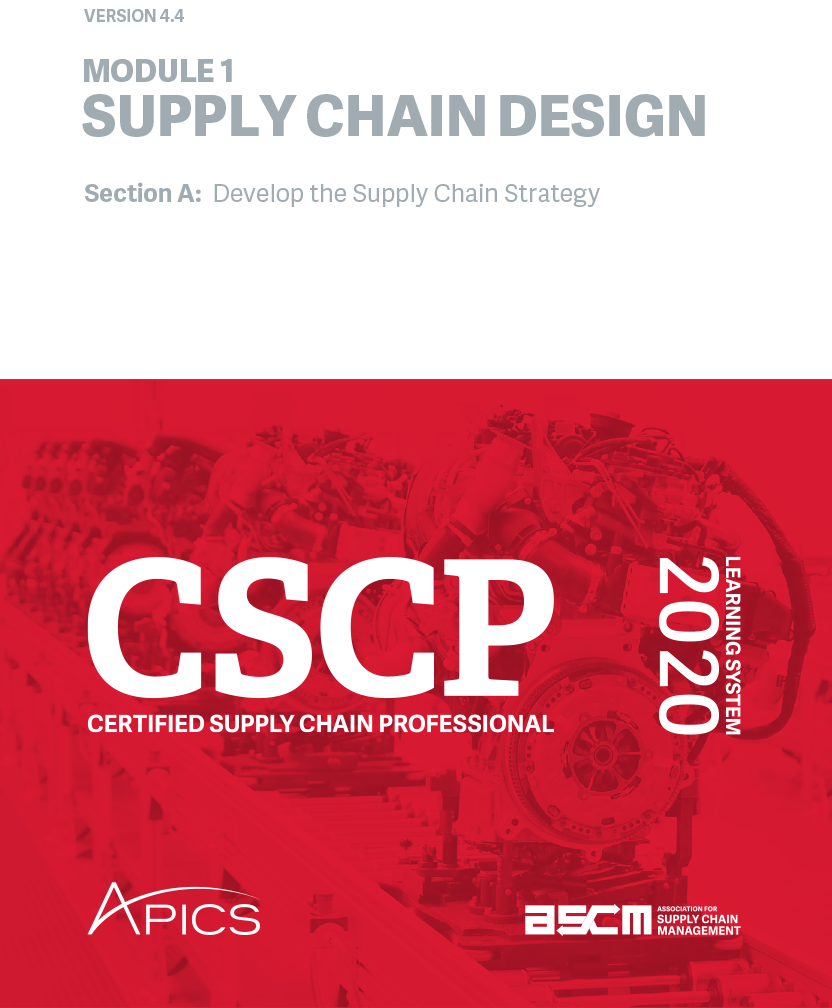
This section introduces the competitive advantage of various organizational strategies. It also addresses how to develop a complementary supply chain strategy for those strategies, including how to resolve misalignments or gaps. Some tools and techniques that can be used to help in understand the economic environment and assess an organizations strategic strengths and weaknesses will also be covered.
Theres a kind of magic in some words, strategy and strategic being key examples. Place strategic in front of the name of any business process, and suddenly that process acquires an aura of great importance. Strategic objectives cry out to be achieved in a way that simple objectives do not. Strategic planning, the process of developing a strategic plan, sounds considerably more sophisticated and powerful than plain old planning. Theres a reason those words have such power. Strategy, originally a military term, is how generals marshal all available resources in pursuit of victory. Strategy wins football games and chess matchesor loses them.
Its really the same in the business world. Each company has a business strategy that paints a broad picture of how it will compete in the marketplace. According to the APICS Dictionary, 16th edition, a strategic plan describes
how to marshal and determine actions to support the mission, goals, and objectives of an organization. [It] generally includes an organizations explicit mission, goals, and objectives and the specific actions needed to achieve those goals and objectives.
Since business strategy is like military strategy in that it requires the marshaling and organizing of all its resources, then it becomes clear that the businesss supply chain can be its most potent strategic resource. Designing and building the right supply chain, one that promotes the business strategies, may just be the most powerful way to gain an edge on the competition, to move faster, deliver more value, and be more flexible in the face of both steady change and surprises. The supply chain strategy is a complex and evolving way that organizations use to distinguish themselves in the competitive contest to create value for their customers and investors.
In Exhibit 1-1 you can see how the direction of an organization is predicated on its business strategy. Of course many organizations now also use mission and vision statements to give clarity to their purpose.
Exhibit 1-1: Alignment of Strategies
If these strategies are not aligned, the direction and fit will be askew. All three strategies are linked and dependent. The APICS Dictionary, 16th edition, differentiates between business and organizational strategy (listed as strategy in the Dictionary) as follows:
Business strategy. A plan for choosing how to compete. Three generic business strategies are (1) least cost, (2) differentiation, and (3) focus.
Strategy [organizational]. For an enterprise, identifies how the company will function in its environment. Specifies how to satisfy customers, how to grow the business, how to compete in its environment, how to manage the organization and develop capabilities within the business, and how to achieve financial objectives.
Supply chain strategy is then a strategy for how the supply chain will function in its environment to meet the goals of the organizations business and organizational strategies. Competitive advantages are closely related to business strategy because they outline the advantages the organization should realize once it has decided how it will compete. A business model is the organizations business and organizational strategy formalized into a business plan.
The business model, competitive advantages, and external influences on supply chain strategy are the first subjects in this section. Then you will explore supply chain strategy and how to resolve gaps between the as-is and desired strategies. You will also learn about some tools to achieve supply chain strategy.
The key processes that supply chain managers need to be able to perform related to developing the supply chain strategy are
Aligning with the business strategy
Creating the supply chain strategy.
The following is a general overview of these processes. The information required to plan and execute these processes is presented in this sections chapters.
The process of aligning with the business strategy involves the following steps:
Reviewing the organizations business plan, financial statements, and other information and analyses related to business strategy to learn
The organizations overall strategic objectives, including its vision, key business policies, and cost and revenue objectives
Its value proposition for customers and stakeholders, including its core capabilities (and areas it chooses to avoid)
How it will differentiate itself in the marketplace to compete and grow in the face of change and uncertainty
Gathering information on the external environment, including
Customer requirements
Competitor business and supply chain strategies
Competitor supply chain maturity
Market size and market share
Overall, regional, local, and industry market conditions
Global risks and opportunities
Reviewing current supply chain capacity, resilience, sustainability, and adaptability to understand the current state of the supply chain (actualized strategy)
Analyzing actual alignment to business strategy and the current environment
The process of creating a supply chain strategy that is complementary to the business model and the current environment involves the following steps:
Defining customer service objectives for business-to-business and/or business-to-consumer
Selecting a revenue model, including direct and/or indirect and sales channels for each customer segment
Mapping supply chain objectives to business objectives
Aligning in-house versus contracted supply chain operating models and cost structure to organizational core capabilities and strategy
Aligning operating model (e.g., make-to-stock)
Aligning cost structure or asset footprint (e.g., property, plant, and equipment and human resources for planning, sourcing, production, and logistics by region)
Documenting the strategy, including
Clarifying the supply chain value proposition
Creating a network model
Presenting and marketing the strategy to get executive or supply chain partner support and approval
Accepting feedback and making agreed-upon changes
Getting approval for the strategy
Comparing supply chain strategy to actual supply chain capacity, resilience, sustainability, and adaptability
Creating action plans to resolve misalignments or gaps between desired and actual supply chain strategy
Font size:
Interval:
Bookmark:
Similar books «CSCP 2020 Module 1 Section A»
Look at similar books to CSCP 2020 Module 1 Section A. We have selected literature similar in name and meaning in the hope of providing readers with more options to find new, interesting, not yet read works.
Discussion, reviews of the book CSCP 2020 Module 1 Section A and just readers' own opinions. Leave your comments, write what you think about the work, its meaning or the main characters. Specify what exactly you liked and what you didn't like, and why you think so.

